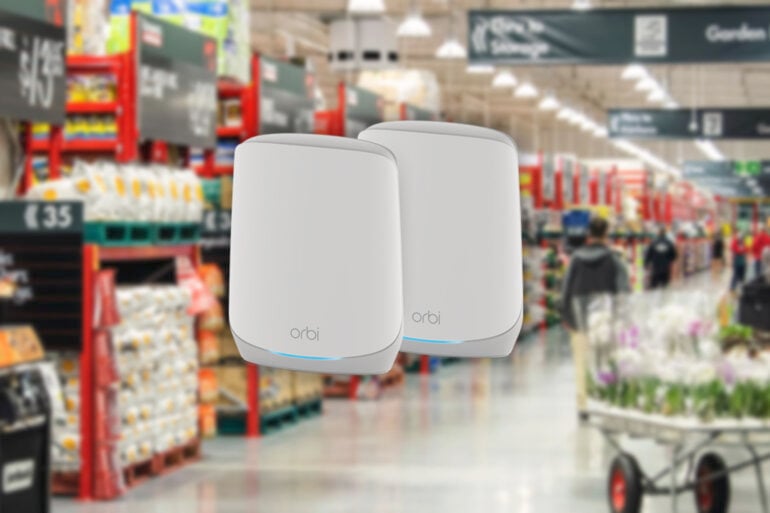It’s hard to enjoy the NBN speed boost if your home Wi-Fi can’t do it justice, but you don’t always need to spend a fortune to fix your wireless woes.
The recent NBN speed boost offered a much-welcome shot in the arm for Aussie homes on 100+ Mbps plans, connected via the FTTP or HFC networks. The 100/20, 250/25 and 1000/50 plans leapt to 500/50, 750/50 and 1000/100 respectively, making it even more tempting to upgrade if you’re still slumming it on 50 Mbps or less.
Of course, getting those speeds to your front door is one thing. Extending them to the furthest reaches of your home is a whole different challenge.
I’ve lived in a narrow three-story home for nearly 20 years, so getting decent Wi-Fi coverage has always been a challenge. After trying a few different solutions, I eventually opted for a three-hub Netgear Orbi mesh Wi-Fi system.
The three hubs are spread around the house, working in unison to create a single Wi-Fi network. My Wi-Fi devices seamlessly roam between them, just like mobile phones roam to the nearest tower.
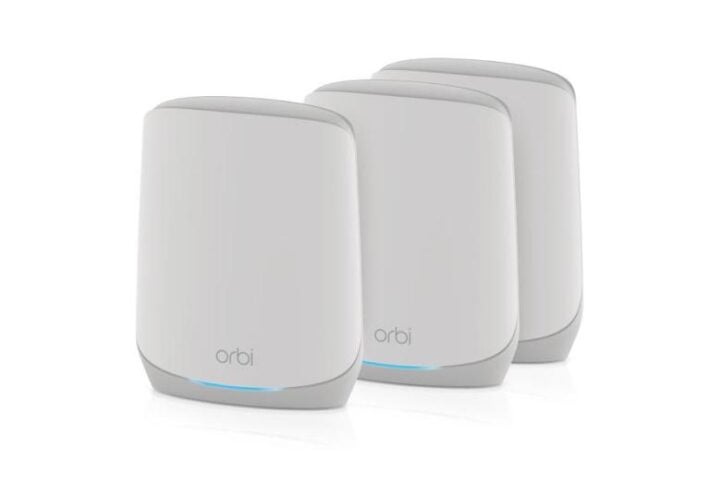
Two Orbi hubs are located on the middle floor, at the front and back of the house, to cover the living areas. The front hub in the lounge room is the primary hub, plugged into my NBN NTD box.
The third Orbi hub is on the top floor at the front of the house, sitting on a benchtop on the landing to cover the bedrooms.
Fixing your Wi-Fi woes
Living in a multi-story high-tech home full of wireless interference, it’s always been difficult to ensure the hubs maintain a steady wireless connection with each other to create a stable mesh network. If the nearest one drops out and you’re relying on a hub further away, your speeds can slow to a crawl.
The upstairs Orbi hub has struggled the most over the years. It seemed fine when I first installed it, but I think a firmware update might have upset it. Plus, to be fair, there is a lot of crap in the way because we’re overdue for a spring clean after last year’s burst water pipe wreaked havoc.
The good news is that Netgear lets you link the Orbi hubs via Ethernet cables if they’re struggling to maintain a wireless link. The bad news is that it can be tricky and expensive to run Ethernet cables between floors in your home.
When I first moved into this house, back in the days of 4 Mbps DSL, I paid someone to run phone and Ethernet cables from the lounge room down to my home office on the bottom floor. It didn’t occur to me that I should also get them to run Ethernet upstairs.
Since the wireless mesh link to my upstairs hub became unstable, my workaround has been to use 500 Mbps PowerLine AV adapters to connect the upstairs hub back to the primary hub. They plug into your power sockets to run Ethernet through your home’s electrical wiring.
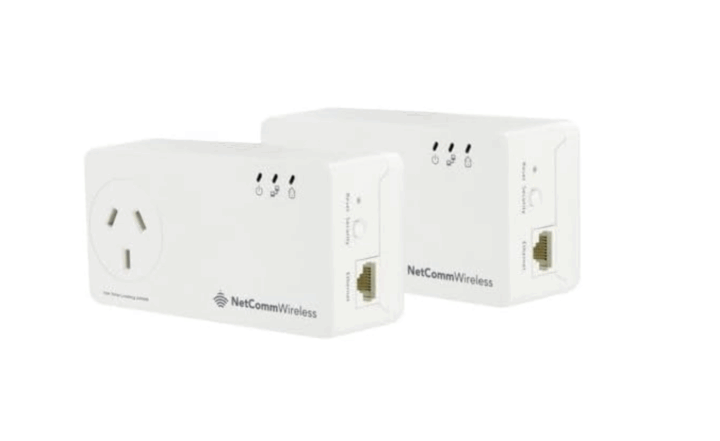
In theory, PowerLine AV can run at a few hundred Mbps. The problem is that the power sockets on each floor of my house are on separate fuses at the switchboard, which takes a heavy toll on speeds.
Running a 500 Mbps PowerLine AV connection between two rooms on the same floor, I get around 200 Mbps. Running it between rooms on different floors, this plunges to 30 Mbps.
Before the recent NBN speed boost, this meant I had 100/40 Mbps Wi-Fi downstairs in the living areas but only 30/30 Mbps upstairs in the bedrooms. It was frustrating, but I decided I could live with it because at least it was stable. This became a much harder pill to swallow once it became 500/50 downstairs and 30/30 upstairs.
Look at the problem from a different angle
I knew the solution was to move the upstairs hub so it could maintain a stronger connection to the primary hub downstairs, but my options were limited. This is where a trip to Bunnings paid off.
The trick was to install a $23 Bunnings floating shelf above the linen closet door on the upstairs landing. (Full disclosure, the supplied nylon anchors for attaching the shelf to plasterboard were terrible, so I employed a $4 Mitre 10 hack and replaced them with spring toggle bolts – similar to these but with heads big enough they would fit with the shelf’s wall bracket).
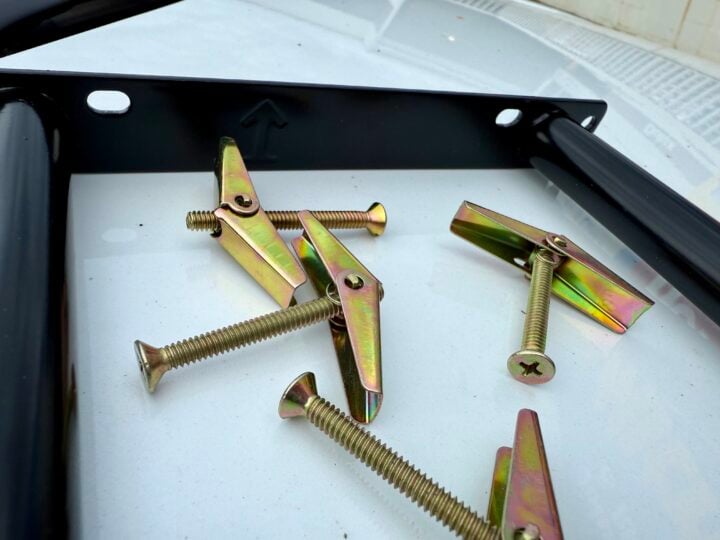
With the shelf in place, the upstairs Orbi hub could sit up high in a more central location, getting power via an extension cable that runs into the ceiling space through the roof of the linen closet.
Thankfully, the power extension cable was already in the linen closet because I ran power and audio cables through the ceiling many years ago for wired multi-room audio in the bedrooms.
It always helps to have your Wi-Fi hubs up high; the primary hub is already installed up high to help it reach the other hub on the middle floor. The big benefit of installing the upstairs shelf is not ust height, it’s changing the angles to ensure the Wi-Fi signals travel through less floor to reach the primary hub downstairs.
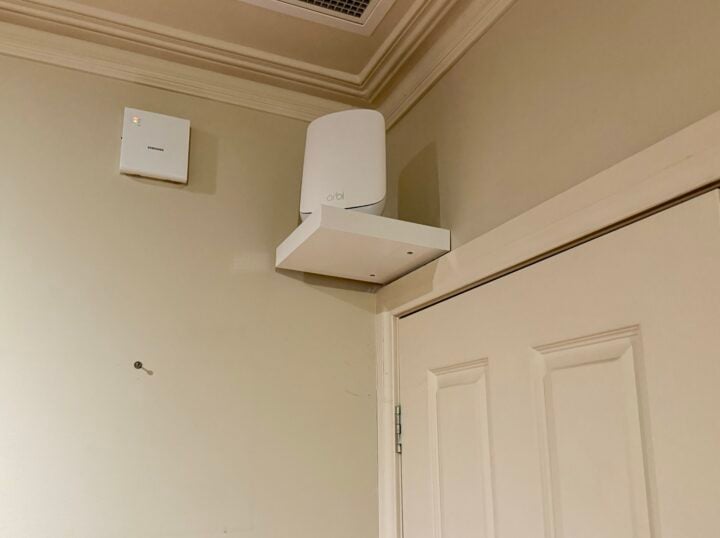
Thinking back to high school geometry, creating a steeper angle between the hubs on different floors reduces the amount of floor that the Wi-Fi signal needs to pass through. The floor might only be a few centimetres thick, but, at a shallow angle, it can actually seem a few metres thick to your Wi-Fi network.
As you can see below, the upstairs hub is now further away from the primary hub, but the improved angle means the signal travels through less floor to ensure a steady link.
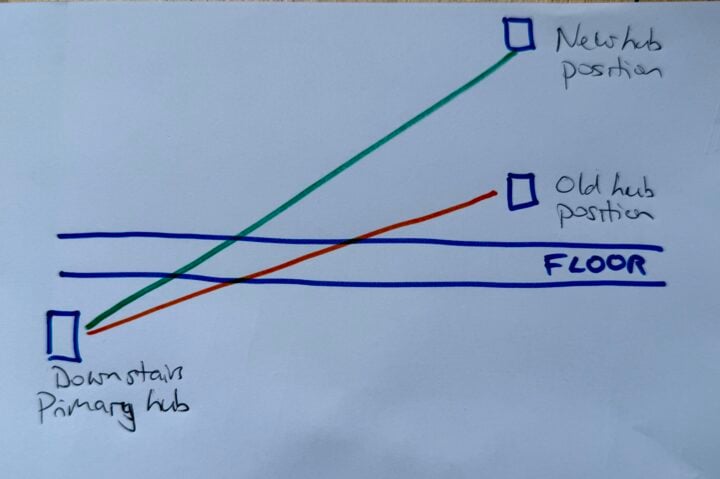
Now I’m getting around 190/43 upstairs, which admittedly is still well short of 500/50, but I can live with that. I’m not spending good money on a new mesh or paying an installer to run Ethernet cables just because my pride insists on getting 500/50 throughout the entire house.
